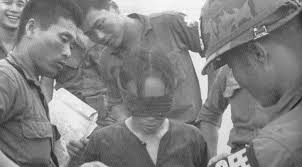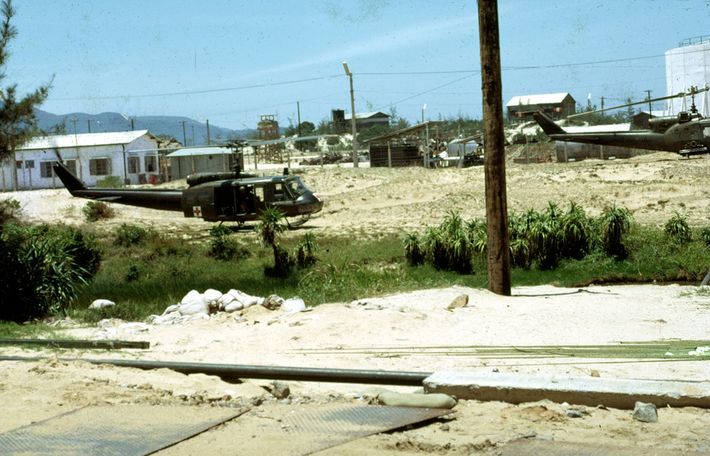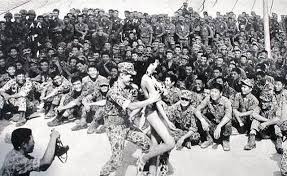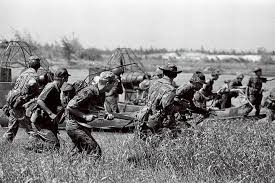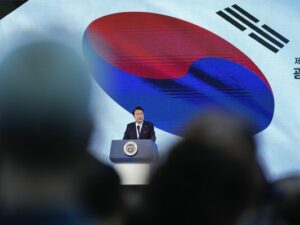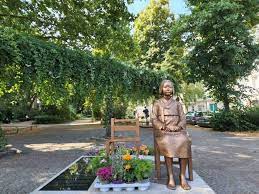By Mitsuo SAKABA, Advisor and former Ambassador Extraordinary and Plenipotentiary of the Republic of Vietnam and Belgium
It is a little-known fact that Korean troops who participated in the Vietnam War massacred a large number of Vietnamese civilians mainly between 1966 and 1968. A total of 320,000 ROK soldiers are said to have been dispatched to the battlefields of Vietnam at the request of the United States to fight against the North Vietnamese Army and the Viet Cong (South Vietnamese Liberation Front), mainly in central Vietnam, resulting in more than 50,000 deaths on both sides (nearly 40,000 of them Vietnamese soldiers). Among the Korean soldiers who participated in the war and later became presidents were Jeon Doo-hwan and Roh Tae-woo.
It is said that Korea sent a large number of soldiers to Vietnam “to defend liberal society against the threat of communism,” and in fact, Korean soldiers who were confronting the communist regime in the North on the Korean Peninsula fought “earnestly” in Vietnam, believing that “the communists were demons. At the time, Vietnamese soldiers were said to have said, “I would rather fight against U.S. soldiers than against the Korean army. Although the U.S. forces dropped bombs, they were reluctant to fight on the ground. In contrast, the South Korean army fought a thorough ground battle, killing the other side’s troops to the bitter end. The Korean military’s fighting style was to kill civilians without mercy. The brutal slaughter of civilians is still told among the Vietnamese people (old-timers).
However, it was not until the 1990s that the mass killing of Vietnamese civilians by the ROK military became known to the public. According to an internal investigation by the Vietnamese military, a total of 5,000 to 9,000 non-combatants (civilians), mostly elderly men, women, and children, were massacred in more than 100 villages in the central part of the country. This record was reported by a Korean student who was studying for his doctorate at the National University of Vietnam and was also a correspondent for the Hankyoreh newspaper in South Korea.
This month, 50 years after the massacre, a delegation of 41 members of the Korea-Vietnam Peace Foundation visited the village in central Vietnam where the incident took place and got down on their knees at the cenotaph to apologize. The foundation is a private organization founded in 1999 by Christians, scholars, and researchers, and apparently sends a delegation to Vietnam every year; since 2015, it has also begun donating and installing “Pieta” statues (statues of the Virgin and Child of Mercy) in Korea and Vietnam.
The group is demanding that the South Korean government officially apologize for the massacre of civilians during the Vietnam War, as well as demanding compensation for local communities, punishment of those responsible, and inclusion in school textbooks. The Korean Veterans Association, however, is vehemently opposed to this demand, protesting to Hankyoreh Newspaper and taking the newspaper to court on the grounds that it defames the honor of former military personnel. The Korean government is also completely ignoring the fact of the massacre.
As far as I know, the only time the ROK government has made its official position on its “participation” in the Vietnam War known to the Vietnamese government was when President Kim Dae-jung expressed “regret” during his visit to Vietnam in 1998. I do not believe that any words of apology have been issued by the Korean side in subsequent summit-level talks. Even then-President Park, who sent a video message to the 50th Commemoration Ceremony of the Korean Vietnam Fighters Association held in September 2014, only praised the contributions made to the country by the Vietnamese soldiers and did not mention the inhumane acts committed against the Vietnamese people. The Korean military personnel were not only responsible for the deaths of women in Vietnam. The issue of the so-called “Lai Dai Han” (Korean half-breeds; some say as many as 3,000 or 30,000), including children born to Vietnamese women raped by Korean soldiers during the Vietnam War, has almost become a taboo subject.
South Korea, at the level of some private citizens (especially religious organizations), is engaged in support activities, such as building hospitals and schools in the region, and providing scholarships to the children of the Lai Dai Han. The aforementioned Peace Foundation official noted, “The (Korean) government’s failure to apologize (for the massacre) is inconsistent with its position of demanding an apology from the Japanese government.” The official pointed out that “the (Korean) government’s failure to apologize (for the massacre) is inconsistent with its position of demanding an official apology from the Japanese government. However, only a very limited number of people in Korea are making these claims, and both the Korean government and the private sector are trying to keep the historical facts related to the Vietnam War in the dark. Korean society is eager to demand apologies from others, as in the case of the comfort women and conscription issues, but when it must apologize itself, it seems to have a tradition of turning a blind eye.

